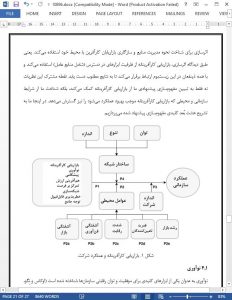Abstract
This study seeks to establish entrepreneurial marketing (EM) as a key construct that positively influences organizational performance. The authors review the evolution of the domain and conceptualization of EM and synthesize the literature that is emerging from the marketing-entrepreneurship interface on this fertile research stream. They define EM and identify the conditions under which it yields better organizational performance outcomes. The moderating effect of network structure (i.e., size, diversity, and strength), environmental variables (i.e., market turbulence, technological turbulence, competitive intensity, supplier power, and market growth), and firm size is identified through several propositions that stem from the proposed conceptual framework.
1. Introduction
“If entrepreneurship is the soul of a business, marketing is the flesh” (Lam & Harker, 2015, p. 341). Technology and other scientific advances offer new products and solutions to consumers at accelerating rates that further increase market uncertainty. In such fast-changing, complex, disordered and paradoxically disoriented environments, with evershrinking product and business lifecycles, anticipated profits from current processes become highly uncertain, so much so that firms must continuously look for new opportunities (Hitt & Reed, 2000; Rauch, Wiklund, Lumpkin, & Frese, 2009; Whalen et al., 2016). Firms must operate in increasingly risky environments associated with diminished forecasting capabilities, weaker barriers to market entry, changing managerial objectives, and new structures that permit and enhance change (Morris, Schindehutte, & LaForge, 2002; Yang & Gabrielsson, 2017). Overall, firms are under increasing pressure to be more innovative, proactive, and agile than ever as they develop and pursue marketing strategies.
5. Future research and limitations
Current research examines EM as a distinct construct that positively influences organizational performance. We also explore EM literature extensively, study its development and conceptualization, the role of environmental factors, observe the relevance of EM to different sizes of organizations, explore the role of networks in EM contexts and develop imperative research propositions. Although there have been early attempts to introduce a scale for EM in SMEs (Becherer, Helms, & McDonald, 2012; Fiore, Niehm, Hurst, Son, & Sadachar, 2013), further effort is nevertheless warranted to develop a robust scale with applicability to all organizations (e.g., Eggers, Kraus, Niemand, & Breier, 2017). By providing a thorough review and a model of EM, this paper provides a useful foundation for the development of such a scale. Furthermore, developing an appropriate scale for EM would help scholars to study MO, EO, and EM interrelationships, demonstrate discriminant validity, and determine if MO and EO could represent the primary antecedents for EM as many (including us) have presumed.











